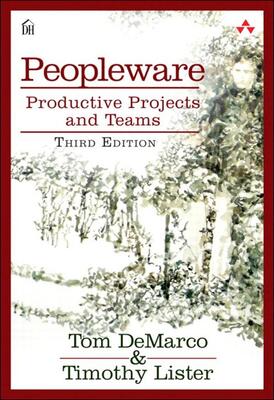
I love the title of this book, it can't be said better. The book was release in 1987 and had its third edition in 2013. The content is still relevant to this day, but sometimes it feels dated.
This is a great book, but I'd say hold off from reading it until you get into managing people. Then this book becomes invaluable resource. It describes the work dynamics from the social perspective and even touches on a big topic like happiness in life.
The book confirmed and cleared a lot of my observations. My three highlights:
Software quality is a cult. Not striving for the best is the common mistakes most companies do. It's not just cutting corners but has an enormous psychological consequences. One of them is job satisfaction. By pushing dev speed over quality you rip the most important part for developers, to be proud of the craft. You might say the speed to market is the king. Sure, but don't be surprised when developers resign.
Hidden hiring costs. It's not so hidden, just ignored. Based on my estimates it costs 50k to hire new candidate. The average employment duration is 2 years. It means you pay 25k per year per hire. It's ironic when company wants to save 5k and not to match the salary offer of the resigning employee. People overvalue simple numbers and ignore more complex ones. The short story, value your people while you have them, otherwise you will pay for it. Even if you spend 20k in perks per employee per year, you should celebrate your decision. It made your employee happier and you saved 5k.
I also enjoyed the chapter on introducing change to organisations. I was burnt in the past when I wanted to improve things. I leant the lesson: people really hate to change. The chapter shows a technique to ease the transformation. Each change needs a catalyst. You need to show and convince the people that the status quo is wrong. The catalyst should create the chaos, the bigger — the better. Only after the people are scared enough you can introduce your idea as a solution to the chaos.
The book sounds too good to be true, but I like the reasoning. I wish it had more to back it up, to build my confidence in the content. But as mentioned above, this book is highly recommended.